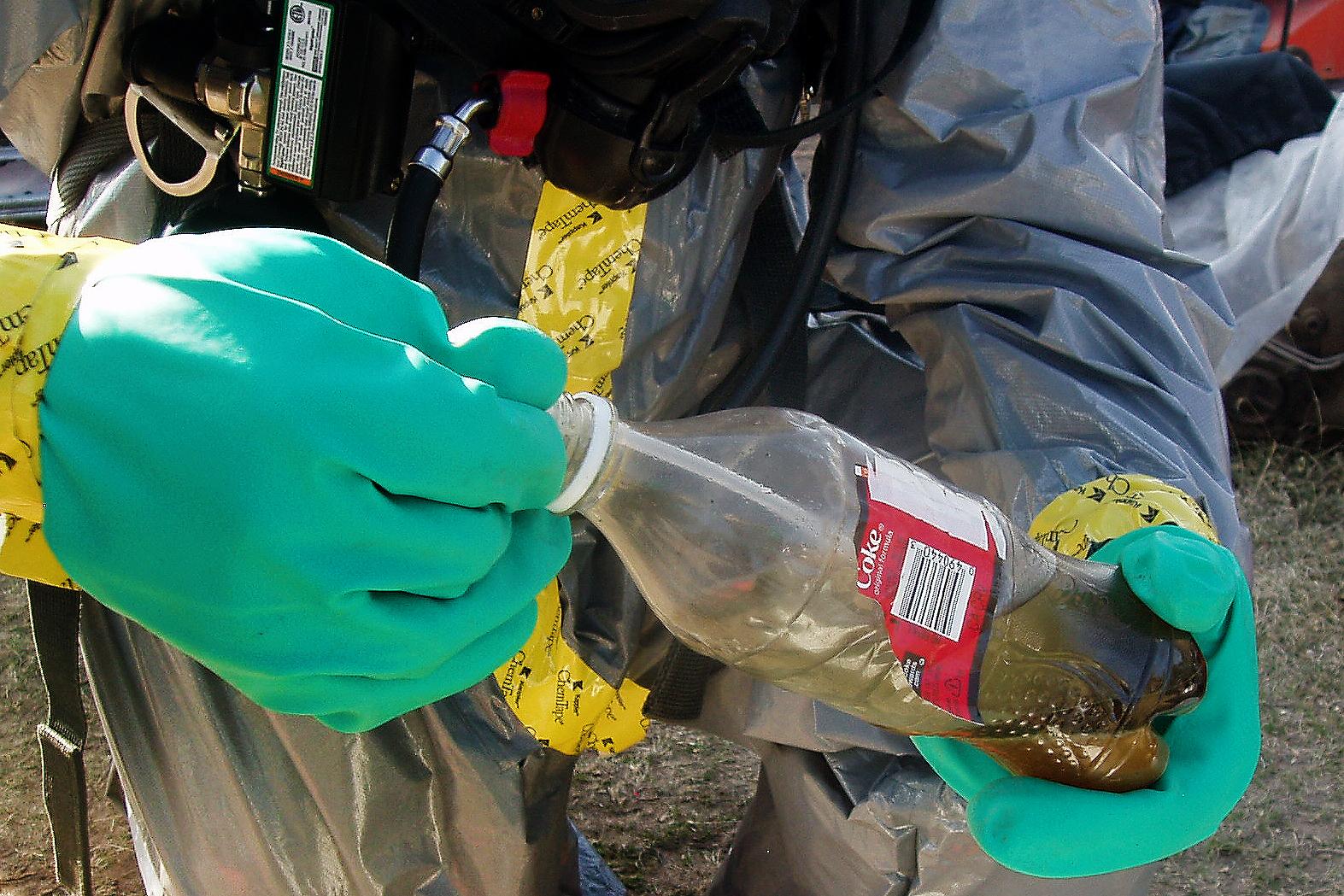

Huddled at a computer screen at the Denver Recovery Group, counselor Melissa McConnell looks at the latest urinalysis results for her client, Sara Florence.
Last fall, it lit up like a Christmas tree. Now it’s all clean. Florence said she stopped using heroin five months ago, she stopped using meth not long after that.
“Shooting it, smoking it, snorting it,” Florence said “It's horrible, just made me feel like crap, you know, but I'd still did it. Just makes no sense, you know. It's just really addicting.”
Meth is particularly insidious, she said, because it’s cheap, readily available and “very common. Everybody does it.”

Her description is in line with state drug overdose numbers from the state Department of Public Health and Environment, which show meth’s enduring presence in Colorado. The drug was found in the systems of 280 Coloradans who died of overdoses in 2017 — up sharply from the year before. That number was more than five times that recorded in 2012.
Denver Recovery Group executive director Denise Vincioni said his organization still sees "rampant use of methamphetamine,” adding that it’s “very difficult to treat outpatient.”
Admissions for meth use to what was once the state's largest treatment facility, the now-closed Arapahoe House, almost doubled from 2013 to 2017. Statewide figures for meth-related treatment admissions have also risen steadily over the last five years. And Vincioni said there’s a new twist: In the past, users mainly seemed to stick to one drug -- opioid pills or heroin or cocaine. Now, they’re using those along with meth.
“We're seeing it's there just almost going hand-in-hand,” Vincioni said.
Counselor McConnell said once people come in for treatment, “They start to get off the opiates, but their meth use increases.”

Contrary to the fictitious portrayal of meth production in popular culture through TV shows like “Breaking Bad” and its high school science teacher-turned-dealer cooking meth out in the desert, meth in Colorado is mostly imported, often along with heroin.
“I would say almost 100 percent of our meth comes from Mexico,” said Tom Gorman, director of the Office of National Drug Control Policy’s Rocky Mountain High Intensity Drug Trafficking Area. Much of it is mass produced there in “superlabs.”
The drug’s continued impact shows up in police statistics. Denver arrests for possession of meth nearly tripled in 2017 compared to 2013. The amount of methamphetamine seized by HIDTA-funded drug task forces across Colorado, as well as Colorado State Patrol, went up sharply from 2016 to 2017.

Meth may have been overshadowed by opioids and marijuana in news headlines in Colorado recently, but Gorman said the drug has remained stubbornly persistent. “We've had a meth problem in this area for a long time. So are we having more people use meth? Maybe. But it's always been our number one problem.”
Sara Florence at the Denver Recovery Group is a mother of three and she’s now 36. Her reliance on drugs started early, at 15, when her parents gave her pain pills for a toothache. She got hooked.
“I grew up around it, you know,” Florence said. “It was around me, my environment. Both my parents were addicts, and so, you know, it was kind of rough not to be one.”
Those troubles eventually lead to heroin and eight years struggling with meth. Florence hit bottom when she got arrested after stealing a Subaru in Lakewood.
“I was homeless and had nowhere to live and driving the stolen vehicle and sleeping in it, and got aggravated motor vehicle theft,” she said.
Then it was off to drug court and eventually to the Denver Recovery Group. After seeing her drug test come back clean, counselor McConnell gave Florence a big hug.
“It’s just so much better quality life now that I'm not doing anything,” Florence said. “This is the cleanest I've been since I was 15-years-old.”
Still, director Denise Vincioni worries about the impact of this latest meth surge. Those dependent on more than one drug are that much harder to treat, limiting chances of “continued sustained recovery.” Her facility is outpatient and many clients need more intensive inpatient services to deal with a meth addiction.
“It's very difficult to stabilize patients who continue to use meth,” Vincioni said.
If a patient drops out of the treatment and counseling program at Denver Recovery Group, they often don’t know what happens to them. The worry is they might not survive, adding to the state’s grim fatal overdose statistics.









